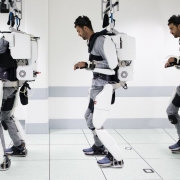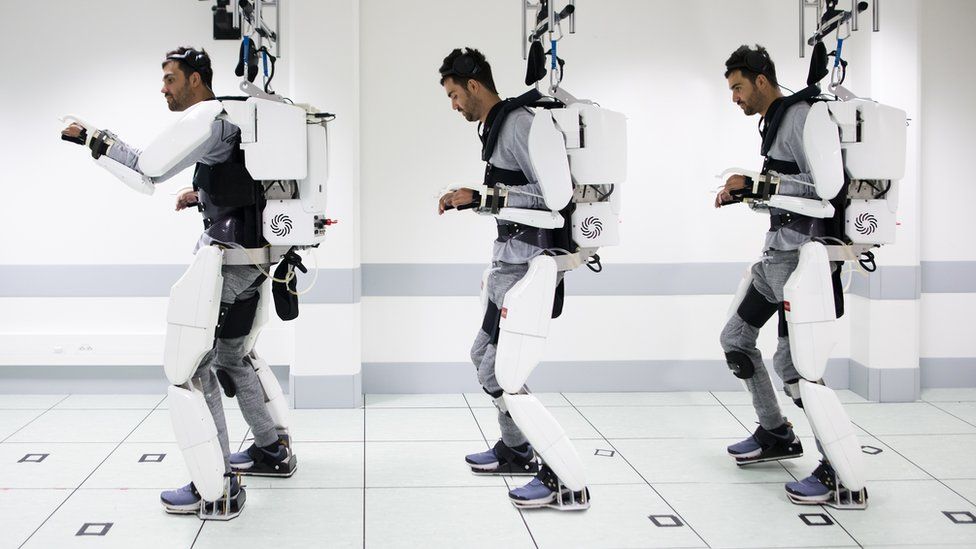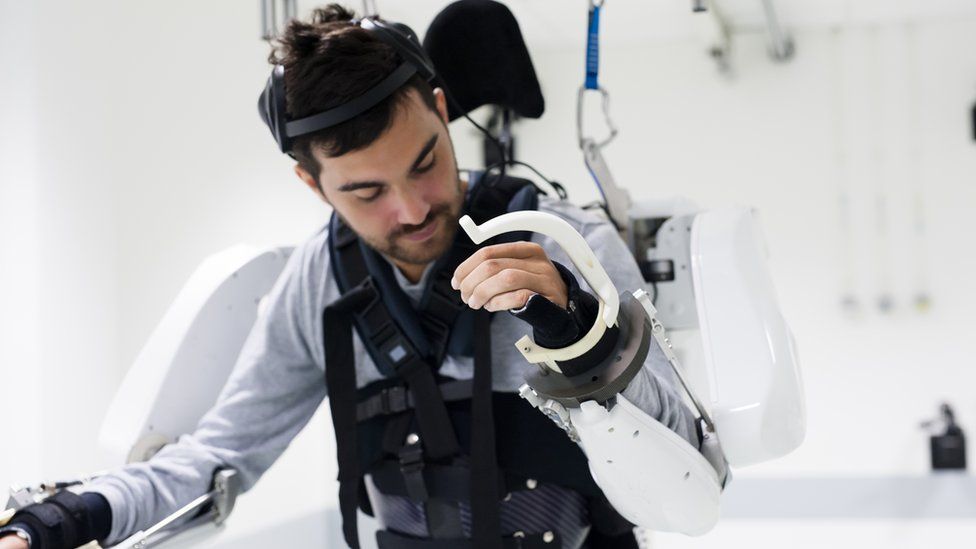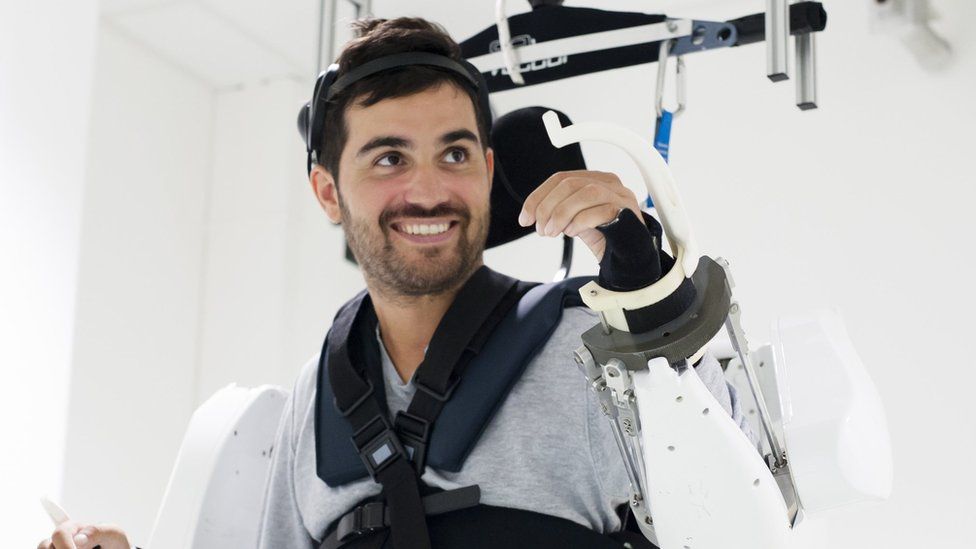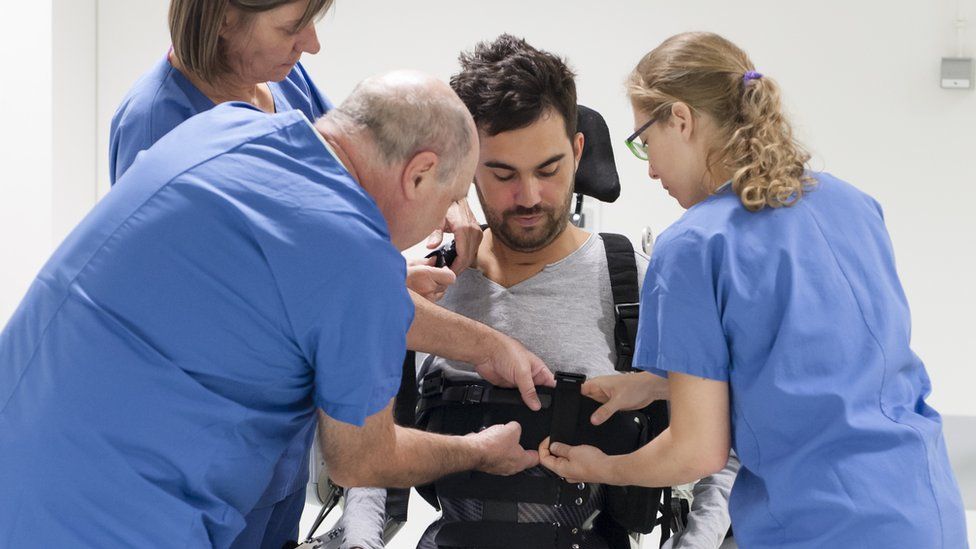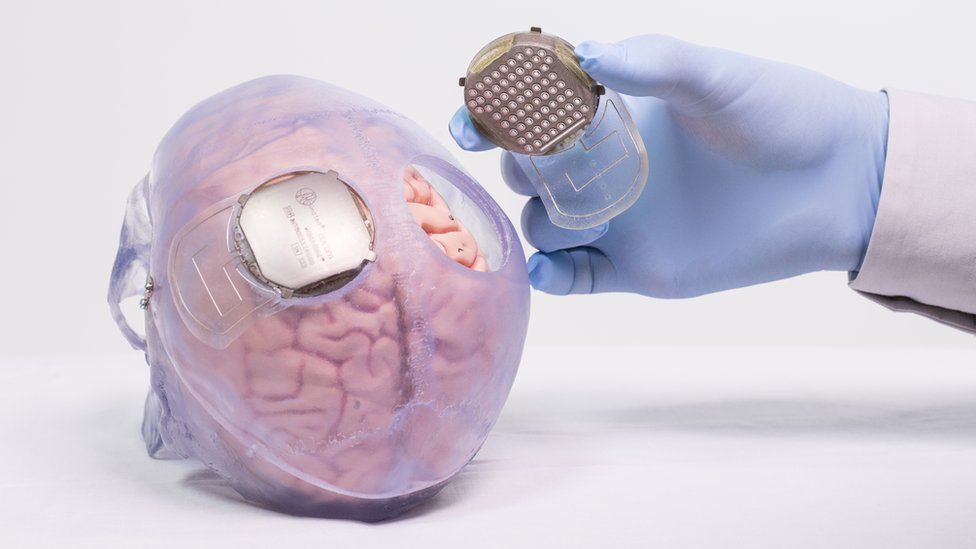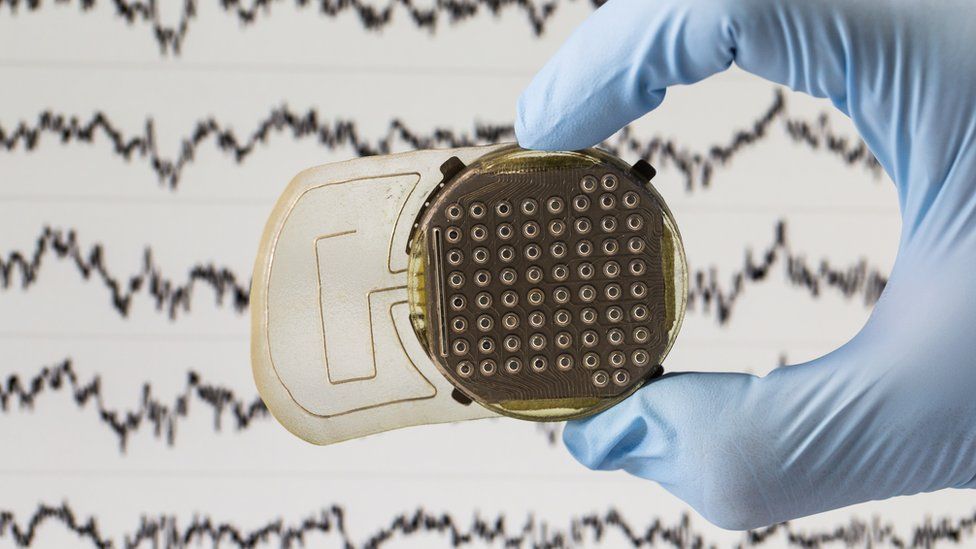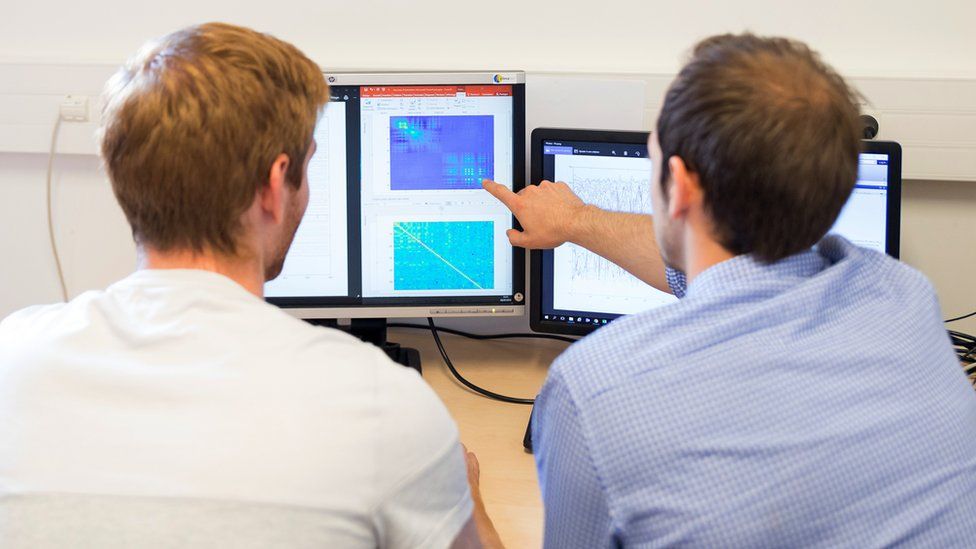Exoskeleton helps man walk again!
Technology is amazing. A paralysed man has been able to move all of his limbs for the very first time in 4 years. All thanks to a mind controlled exoskeleton suit French researchers are reporting.
Thibault, 40, said that his first steps felt like “the first man on the moon”. While his movements, are far from perfect, the robo-suit can only be used in the lab. While researchers are saying that this could one day improve patients quality of life.
Thibault had surgery to place two implants on his brain. Which cover part of the brain that control movement. A total of 64 electrodes on each implant read brain activity and beam instructions to a computer nearby. Software on the computer then reads the brainwaves and sends the instructions back to the exoskeleton. The exoskeleton isn’t light, Thibault has to be strapped into the exoskeleton to use it. All he has to do is think “walk” and it will set off a chain of movements in the suit to move his leges forward. He can even control each of the arms too!
Ease of use
Thibault fell from 15M at a nightclub 4years ago, this left him paralysed. He spent the following 2 years after the accident in hopsital. However, in 2017 he took part in an exoskeleton trial with Clinatec and the University of Grenoble.
At first he used the brain implatns to control a virtual character in a computer game. Before moving on to walking in the suit.
“It was like [being the] first man on the Moon. I didn’t walk for two years. I forgot what it is to stand, I forgot I was taller than a lot of people in the room.
It took a lot longer to learn how to control the arms.
“It was very difficult because it is a combination of multiple muscles and movements. This is the most impressive thing I do with the exoskeleton.”
The exoskeleton
The exoskeleton weighs 65kg and is very sophisticated, however it won’t completely restore function just yet. Yet it displays an advance on similar approaches which allows people to control a single limb with thoughts.
Thibault needs to be strapped in and attached to a ceiling harness. This minimises the risk of him falling over. Therefore while amazing, the device needs a lot of work before can be used outside the lab.
“This is far from autonomous walking,” Prof Alim-Louis Benabid, the president of the Clinatec executive board, told BBC News.
“He does not have the quick and precise movements not to fall, nobody on earth does this.”
Thibault was successful 71% of the time where he needed to use the exoskeleton to move his upper and lower arms and rotate his wrists to touch specific targets.
“We have solved the problem and shown the principle is correct. This is proof we can extend the mobility of patients in an exoskeleton….This is in [the] direction of giving better quality of life.”
Prof Benabid, who developed deep brain stimulation for Parkinson’s disease, speaking to the BBC.
What next?
French scientists say they’ll continue to refine the tech, at the moment they’re limited by the amount of data that they can read from the brain. Send to a computer, interpret that data and then send it back to the exoskeleton.
The amount of time they have is very miniscule. They’ve got 350 milliseconds to go from thought, to movement. Otherwise operating the system becomes difficult to control.
The good news is that out of the 64 electrodes available on each implant to the researchers, they’re only using 32. This means that there is a lot of potential to read the brain in much more detail. Using more powerful computers and sophisticated AI to interpret the data from the brain.
While it’s not possible to move fingers with the exoskeleton, they hope to advance it to such a stage they can move and pick up objects. While he has already used the implant to control a wheelchair.
Dangers
Transhumanism is ways of using exoskeletons to enhance human abilities. This includes military applications.
Professor Benabid told the BBC his thoughts on this:
“We are absolutely not going in the direction of these extreme and stupid applications..
Our job is to repair the injured patients who have lost function.”
The Experts…
Professor Tom Shakespeare from the London School of Hygiene and Tropical Medicine was very complimentary of the technology. Stating that the study presents a “welcome and exciting advance”.
While also stating that the tech may be a while off before becoming a viable alternative:
“A danger of hype always exists in this field. Cost constraints mean that hi-tech options are never going to be available to most people in the world with spinal cord injury.”
Tom Shakespeare also said that only 15% of people with disabilites have a wheelchair or other assistive devices.
Details of the exoskeleton have been published in The Lancet Neurology journal.
(BBC)
Keep up to date with everything How To Kill An Hour by signing up to our newsletter by clicking here!
Let us know what you think of the show by clicking here!
Click here to subscribe to our YouTube Channel to see more amazing ways to kill time!
Follow us on Twitch by clicking here!

